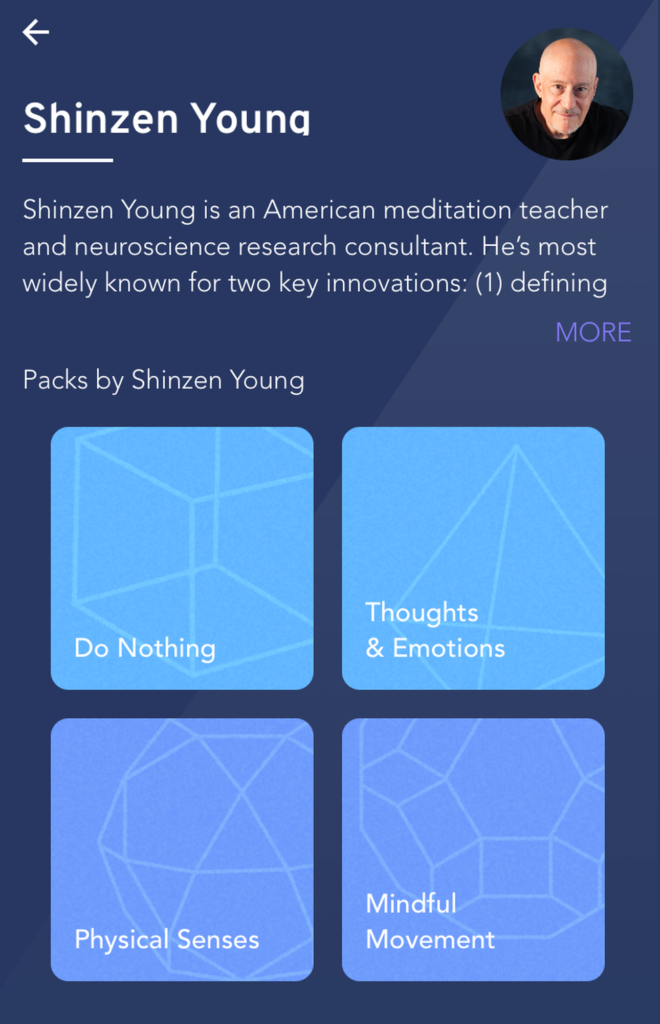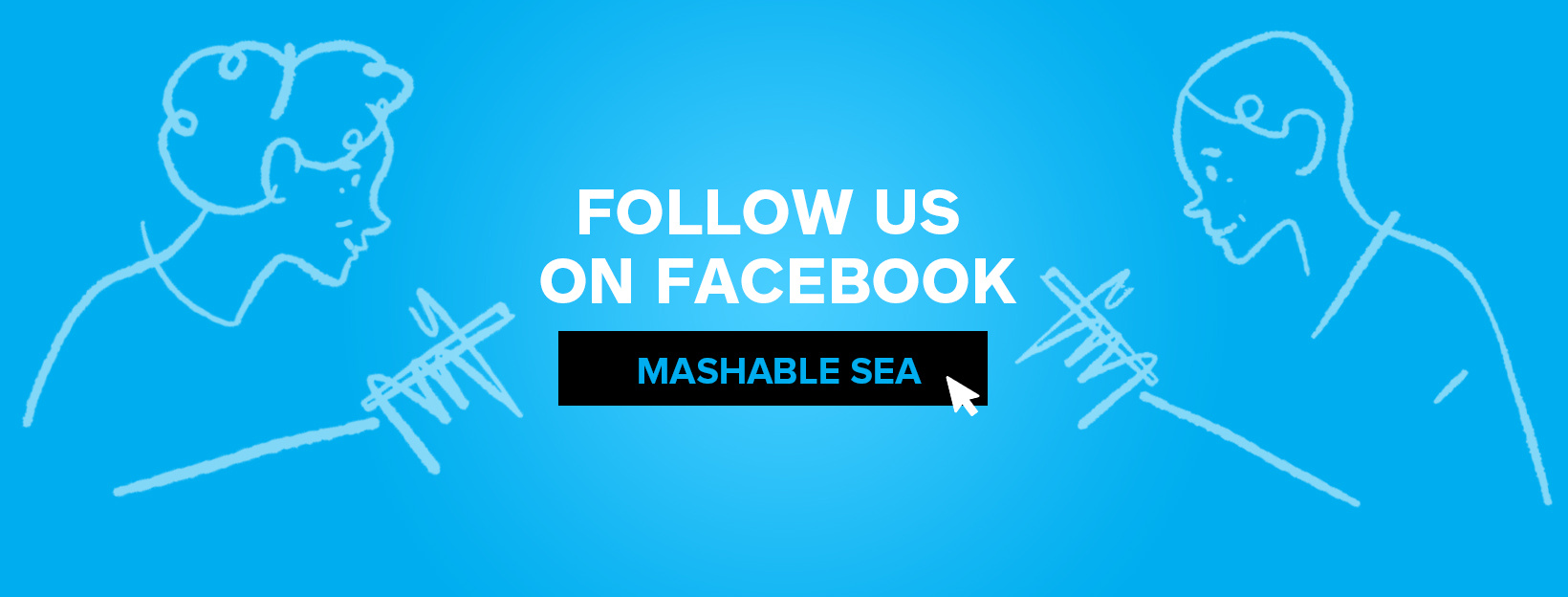Mindfulness has become one of those wellness buzzwords that can mean anything depending on who’s saying it. On Instagram, it might be the hashtag posted alongside an inspirational quote. You’ve probably heard about school teachers who use it to help wiggly kids. Corporations have turned to mindfulness to boost employee productivity.
Despite how it’s used in popular culture, mindfulness as a concept has a widely accepted definition: It is awareness that arises through paying attention, on purpose, in the present moment, nonjudgmentally, according to mindfulness expert Jon Kabat-Zinn. Rooted in Buddhist meditation traditions, mindfulness is a practice that can reduce stress, increase focus, and decrease emotional reactivity, among other benefits.
If that sounds great, you might be wondering how to actually learn and cultivate mindfulness. The good news is there’s no shortage of options. Kabat-Zinn has a series of books on the subject, along with audio and video instruction. The UCLA Mindfulness Awareness Research Center offers live and pre-recorded classes, as do other universities with mindfulness programs. In pre-coronavirus pandemic times, your local yoga studio probably hosted mindfulness workshops, which may have since shifted to Zoom. Similarly, meditation centers are also an excellent resource.
For some, however, learning mindfulness via an app may be more appealing. It eliminates the awkwardness of joining a class or video call as a stranger. Sessions can be done at your preferred time, location, and place. The downside, however, is sorting through hundreds of wellness apps, after searching for “mindfulness,” trying to find the one that best suits your needs and personality.
That’s why we’ve talked to experts about what qualities to look for in a mindfulness app, and reviewed several apps that offer some form of mindfulness education.
How does mindfulness work?
The first thing you might be wondering — or feel worried about — is whether practicing mindfulness means committing to meditation. The two things are, in fact, separate.
Diana Winston, director of mindfulness education at UCLA’s Mindful Awareness Research Center and author of The Little Book of Being: Practices and Guidance for Uncovering Your Natural Awareness, likes to describe mindfulness as a quality of attention you can have at any point of the day. Meditation is a technique that helps train the mind to develop that attention, through repetition and practice.
“Do you have to meditate to be mindful? No. Does it help? Yes.”
“Do you have to meditate to be mindful? No. Does it help? Yes,” says Winston, who offers mindfulness instruction on the UCLA Mindful and Ten Percent Happier apps.
Another helpful distinction is to remember that meditation doesn’t necessarily involve mindfulness. Some meditations are meant for relaxation or sleep. Mindfulness, on the other hand, is the work of staying in the present moment, so dozing off during a session isn’t exactly encouraged. Mindfulness meditation is designed to focus your attention on whatever feelings or sensations arise. Those could be pleasant, neutral, or even painful. The point is to accept whatever comes rather than avoid or wish it away.
Developing that acceptance is a skill — and one that’s critical to experiencing the benefits of mindfulness, according to research.
Emily Lindsay, a research assistant professor at the University of Pittsburgh, led a 2018 study that developed a mindfulness training app with renowned expert Shinzen Young to discover what happened when one group of users received instruction on monitoring their emotions and physical sensations while a second group learned both how to pay attention to those feelings and accept them. A third control group learned certain coping skills.
Lindsay and her co-authors found that the group exposed to the combination of monitoring and acceptance experienced significantly lower blood pressure and lower levels of the stress hormone cortisol. Additional research showed other benefits like increased positive emotions and reductions in loneliness.
“We found that it was really important to learn these acceptance skills, like equanimity and welcoming your experiences,” says Lindsay. Simply noting one’s thoughts, in the absence of that calmness and openness, might not lead to the same benefits.
The strength of mindfulness is that it can be applied to any situation, including quotidian or common events like brushing your teeth or arguing with your child. One key skill you’ll learn is how to work with difficult thoughts and emotions as well as physical discomfort.
If this doesn’t sound right for you, it may not be. Despite gushing testimonials about how mindfulness changed people’s lives, the practice can actually worsen anxiety for those who’ve experienced trauma by prompting flashbacks and heightening the body’s fight-or-flight stress response. Paying close attention to your breath or sitting in silence for long periods of time, which is common in many mindfulness meditations, may also feel untenable.
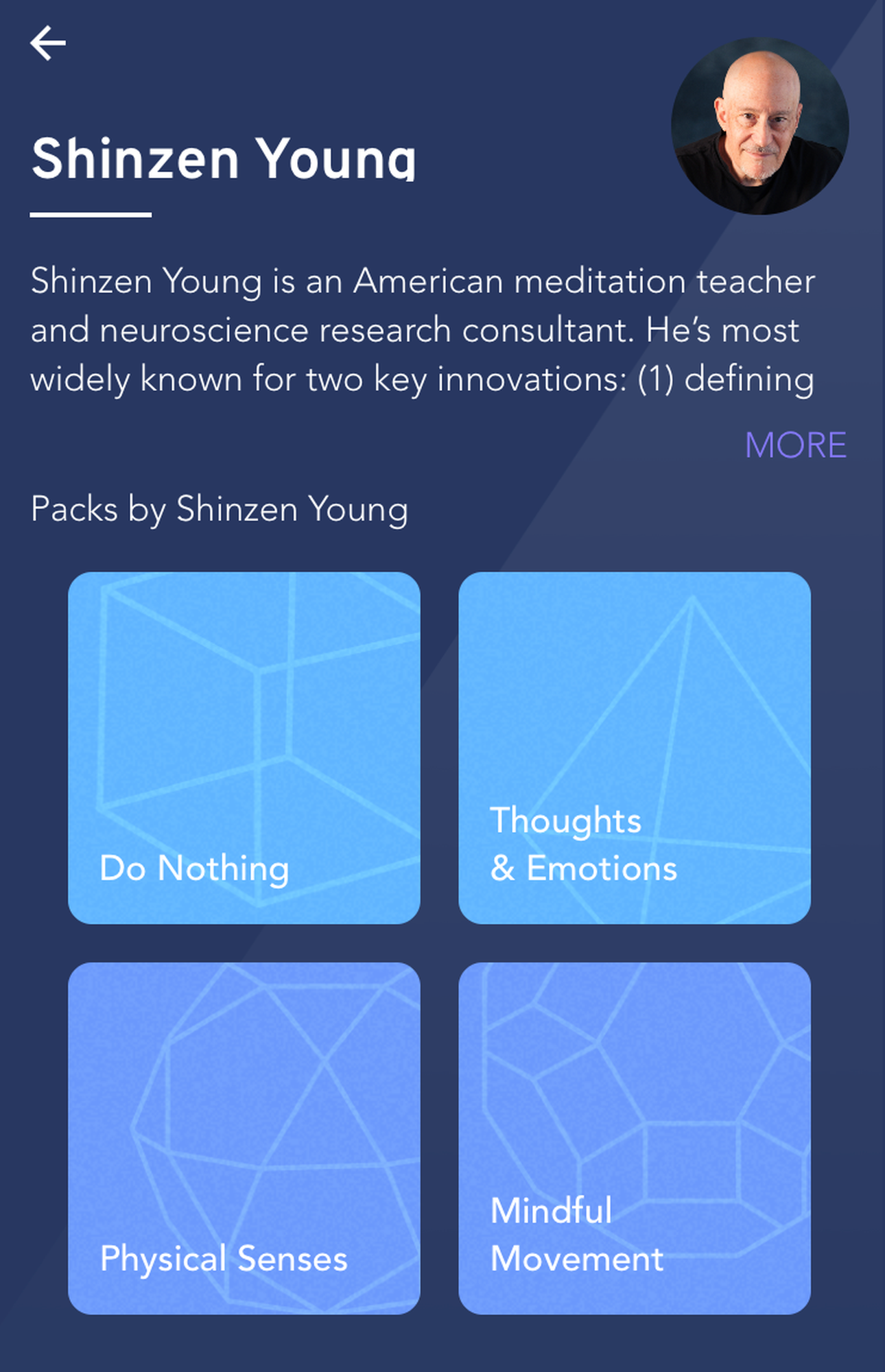
Image: brightmind
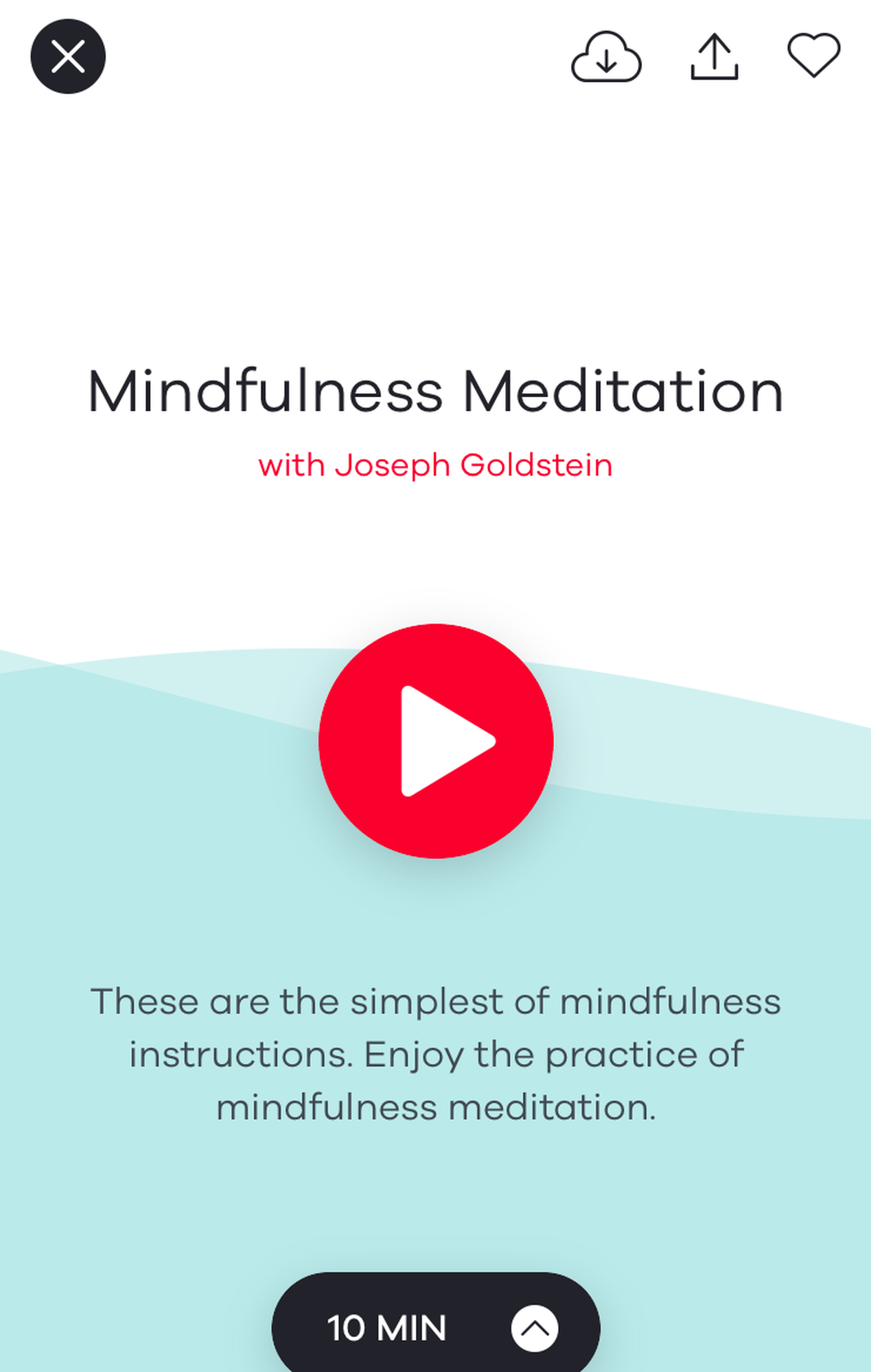
Image: Ten percent happier
“I think everybody has to find out for themselves what they need to do in their view,” says Winston. “For some people [mindfulness] is enough, and for others it’s not enough.”
Skeptics might also wonder if mindfulness is an inclusive practice. After all, the stereotypical depiction of mindfulness frequently involves imagery of white women dressed in yoga attire, looking serene. When a meditation teacher prompts a student to accept their emotions without judgment and release attachment to their identity, a person of color may feel completely misunderstood, or that mindfulness is for people who aren’t coping with internal and external pressures directly linked to that identity. Anger and avoidance, for example, may help a Black person move through the world with conviction, and safely.
“I believe that the more mainstream mindfulness practitioners really try to create practices that are non-contextual, that can be applied at any time, with any person,” says Veronica Womack, a social psychologist who teaches mindfulness studies at Governors State University. “But one of the things I’ve been intentional about is thinking about the context in which a person experiences a stressor for which they go to mindfulness to relieve.”
Womack, co-founder of the website Beneath The Façade, a resource for Black women dealing with gendered racism, says that those stressors are often social and include sexism, heterosexism, and racism. When teachers won’t or can’t acknowledge those factors specifically, it might make students feel excluded or unwelcome. They might wonder how to reconcile being asked to surrender aspects of their identity with the reality that how they’re treated can be directly linked to that identity.
Womack’s own research shows that mindfulness can have positive effects for Black college students. So the problem isn’t necessarily the practice but how the field and its instructors frame it.
“One reason mindfulness can be really helpful for women of color and men of color is because being mindfully aware doesn’t necessarily change the frequency with which you’ll experience a stressor, but it could possibly change your response to it,” says Womack.
What to look for in an app
Both the Apple App Store and Google Play offer numerous high-quality meditation apps. When you sift through the options, take these factors into consideration:
1. Guided meditations vs. mindfulness instruction. If you want to learn mindfulness, look for an app with courses and content specific to that practice. Some apps offer guided meditations that lead the user through a mindfulness experience, says Winston. But other apps are geared towards teaching mindfulness in a more systematic way. She recommends users know what they’re looking for and choose accordingly. If you have trouble finding mindfulness content on an app, try searching for “mindful” or “mindfulness.”
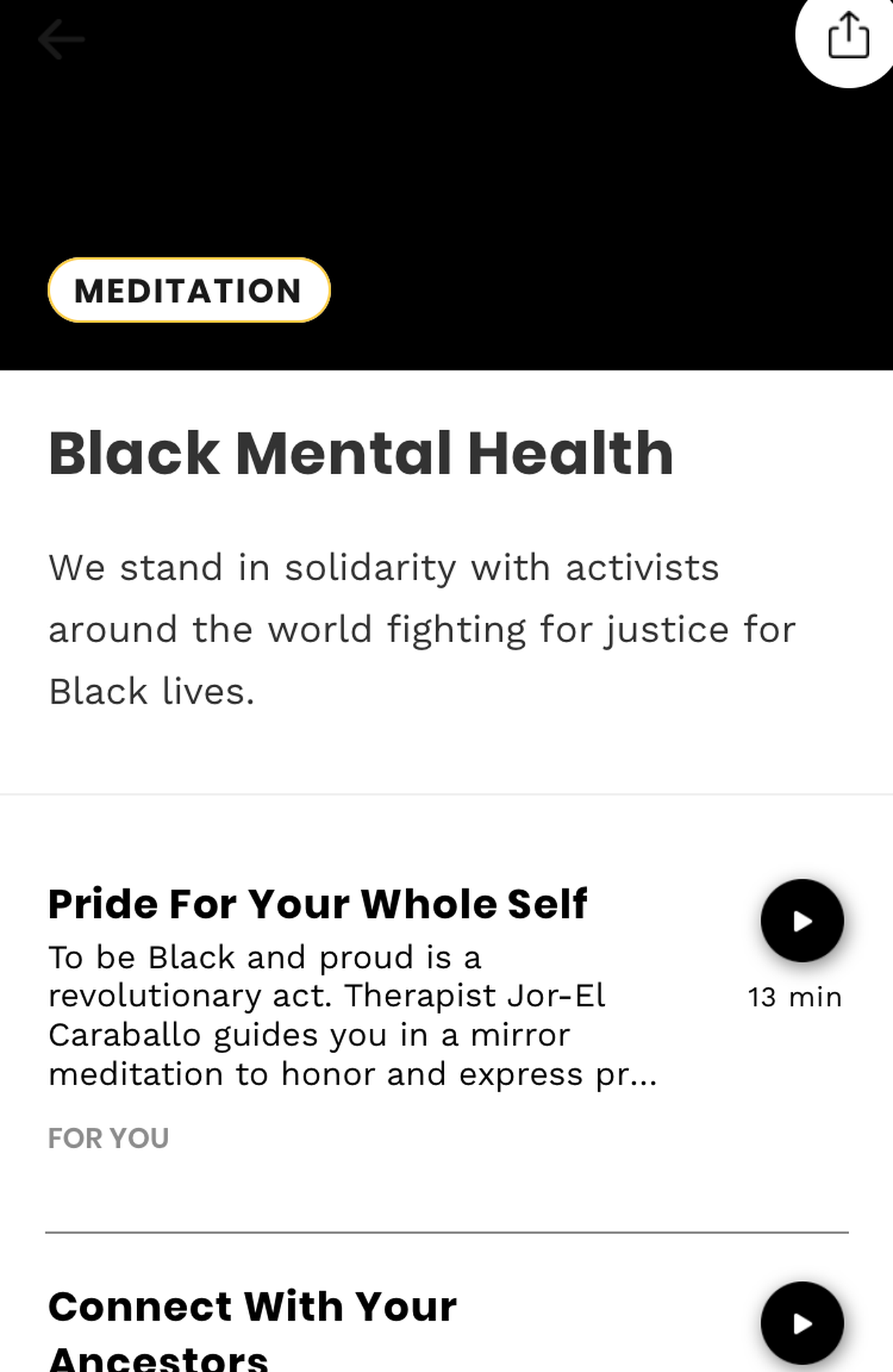
Image: Shine
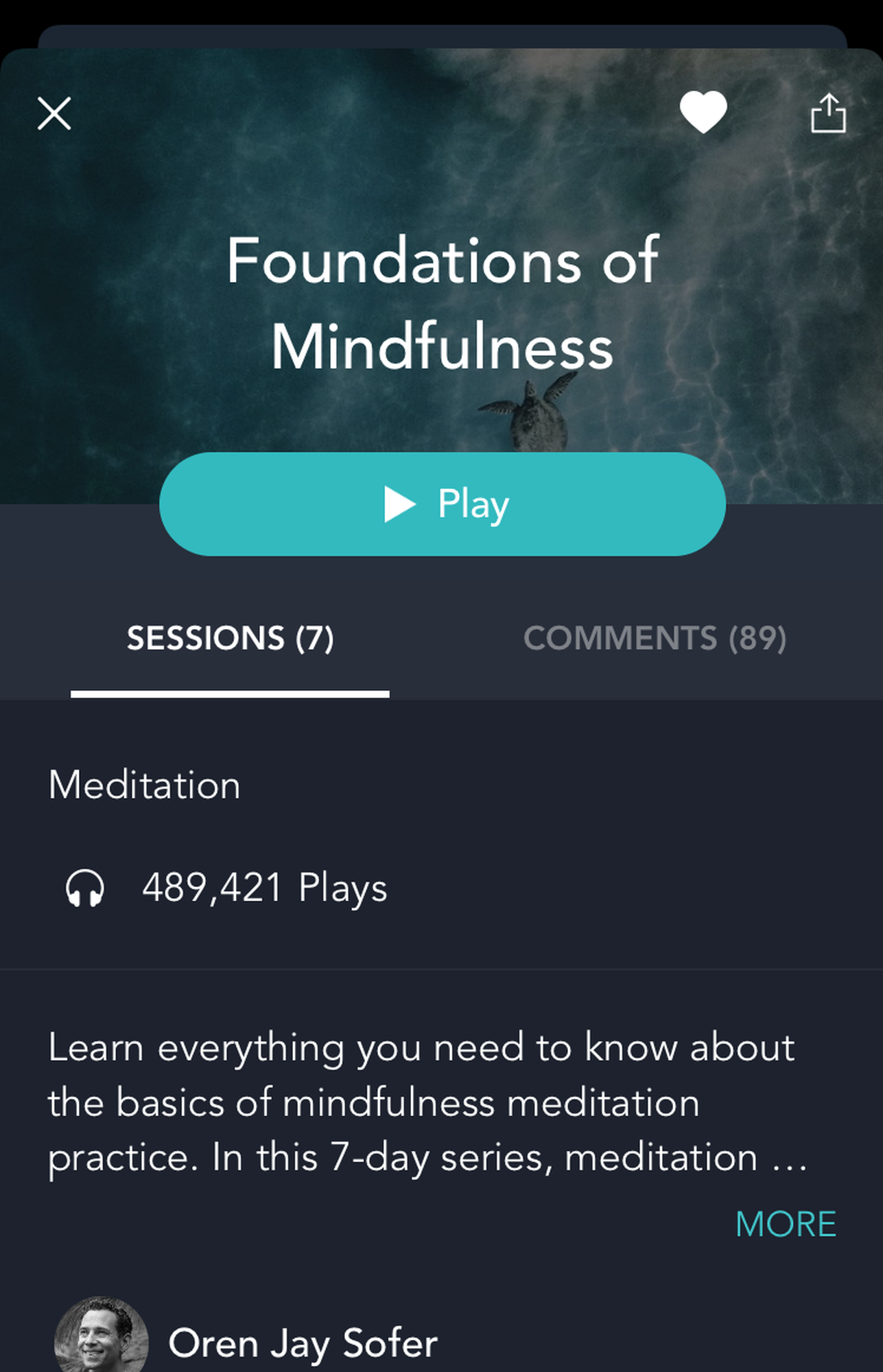
Image: simple habit
2. What skills will you learn? When you search for mindfulness instruction, check to see if the content is skill-based. Awareness, acceptance, and self-compassion are cornerstones of mindfulness. They can be taught, but you won’t learn much from an app that offers vague guided meditation and calls it mindfulness.
3. Check out the teachers. Some apps, like Brightmind and Headspace, are built around teachers who have a long track record in meditation and mindfulness. Brightmind features Shinzen Young, as well as other renowned instructors, and former Buddhist monk Andy Puddicombe voices much of Headspace’s content. Vetting the instructors will give you a better sense of their experience, teaching style, whether they’re actively inclusive of all users, and responsive to current events.
4. Inclusivity. Every user benefits when they’re exposed to a broad range of views on mindfulness. Check and compare apps to see if they offer instruction or content from diverse voices. The apps Liberate and Shine, for example, were developed specifically with people of color in mind, which may be appealing to users regardless of their ethnic or racial identity. Additionally, if the app or instructor adopts a rigid approach to mindfulness, dismissing forms of practice like dance and movement or insisting that you must be alone, it may not be a good match.
5. Community and support. One downside of using an app to study or practice mindfulness is that it’s difficult to replicate the experience of learning in-person from an instructor and hearing from other participants. In most cases, there’s no opportunity to troubleshoot challenges with a teacher. The app, however, Ten Percent Happier, does provide access to personalized coaching with a membership. Sanvello offers coaching, but not necessarily with someone trained in mindfulness meditation. The app also has discussion and chat group rooms. Shine posts a question of the day for community members to discuss, and a premium subscription comes with access to a private community for real-time advice. While it may be more effective to seek community and support outside of an app, it’s worth checking to see what’s available.
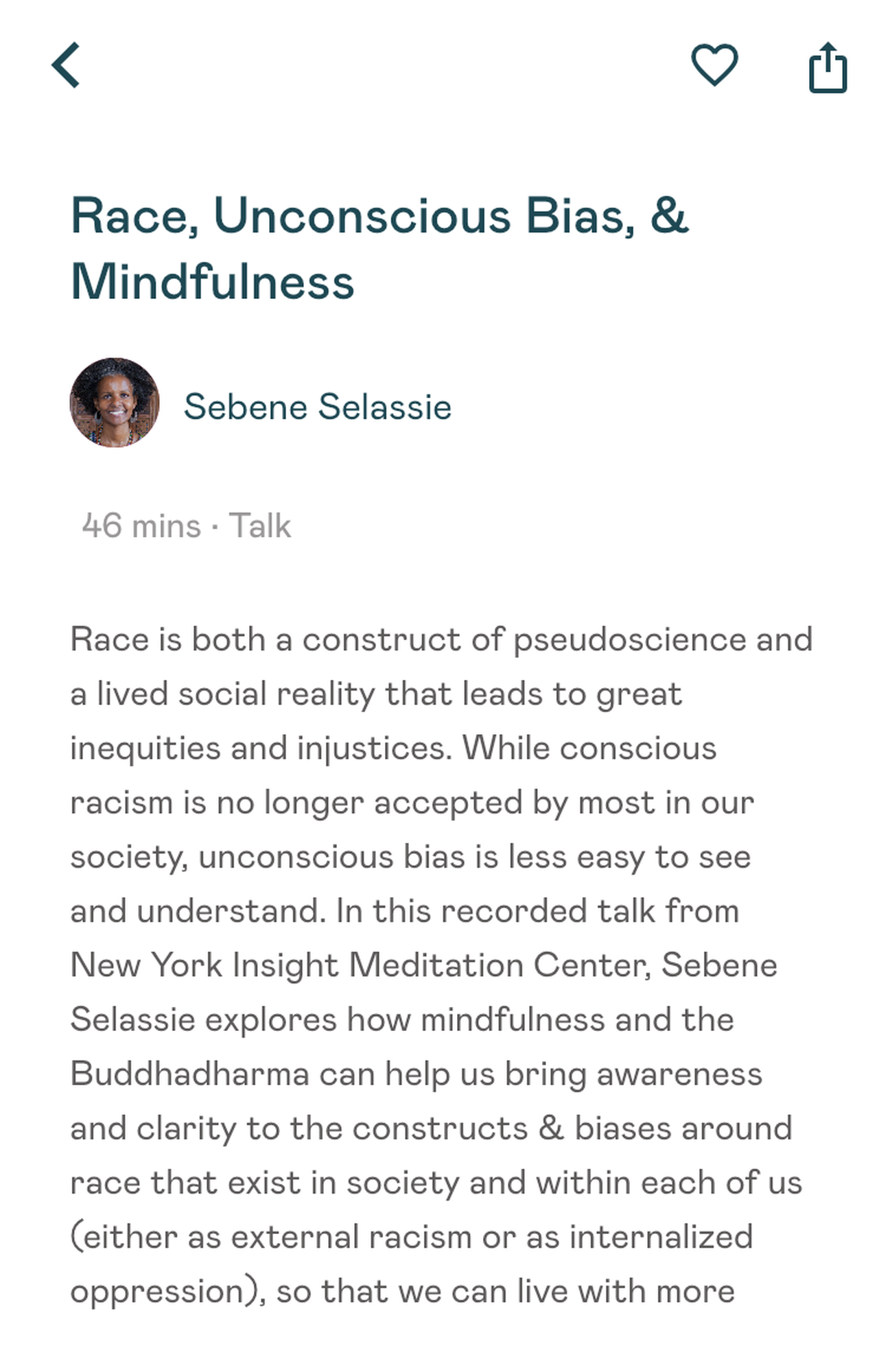
Image: liberate
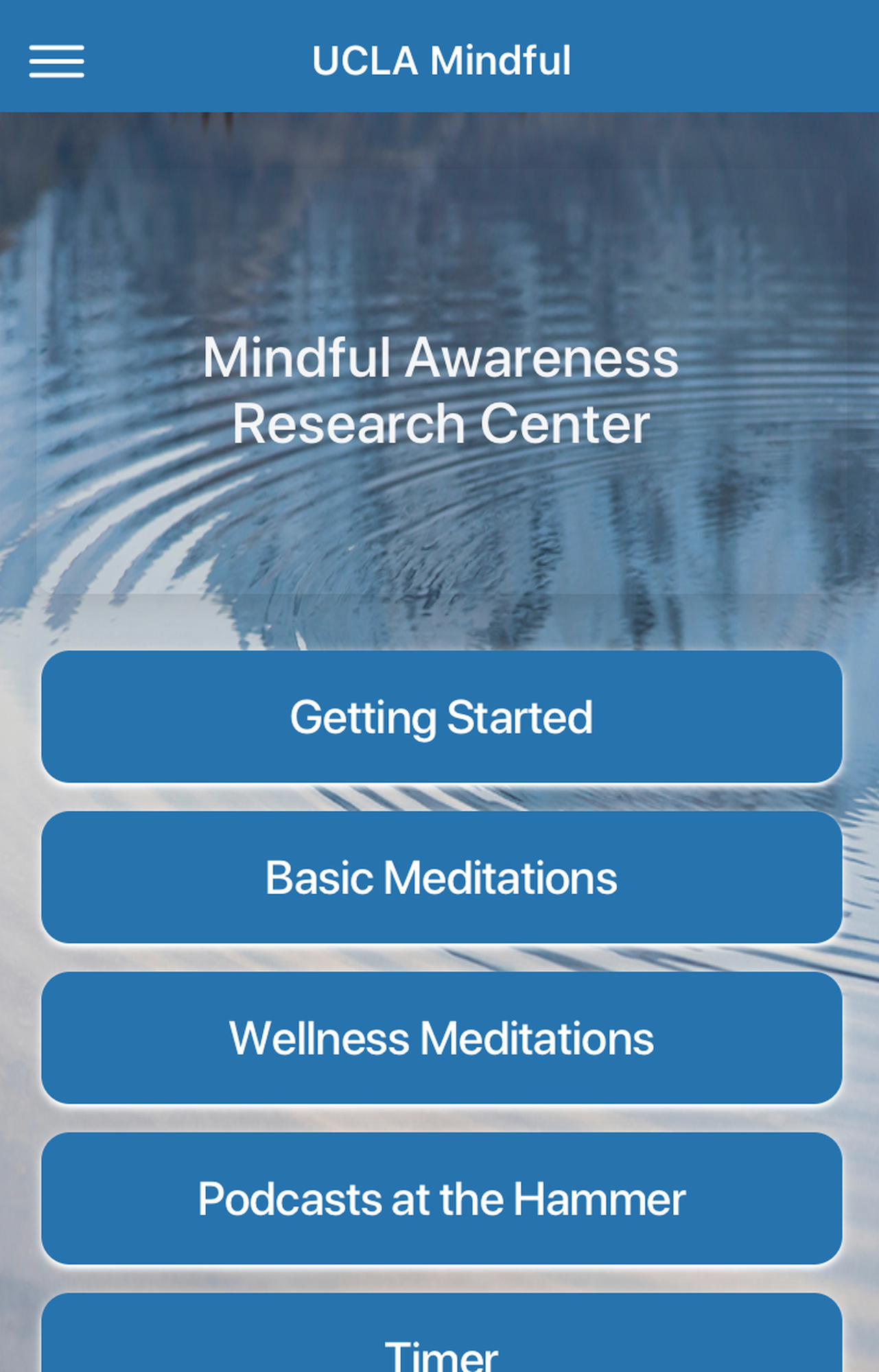
Image: ucla mindful app
6. Does it work? There’s little research to demonstrate whether specific meditation and mindfulness apps work. Headspace touts scientific studies that show some benefit, but experts say the results so far don’t justify embracing it as highly effective. Many apps, though, haven’t even tested whether the product delivers on its claims. Before you use or pay for any mindfulness app, remember that the field is still young. You may not get the results you wanted. That’s why it can be helpful to use an app as part of a broader approach to mindfulness, in addition to attending virtual courses taught by a live instructor or learning about it independently through books and other materials.
The below apps are some of the most compelling in the mindfulness category, though none are perfect. Some are comprehensive, with full libraries of meditations and a systematic introduction to mindfulness. Others offer basic but limited instruction. As you consider trying one, reflect on which of the above components are critical to you and find the best fit. Most importantly, don’t give up on mindfulness after a bad experience with an app. The point of mindfulness is to keep showing up; the practice will still be there even if an app isn’t.
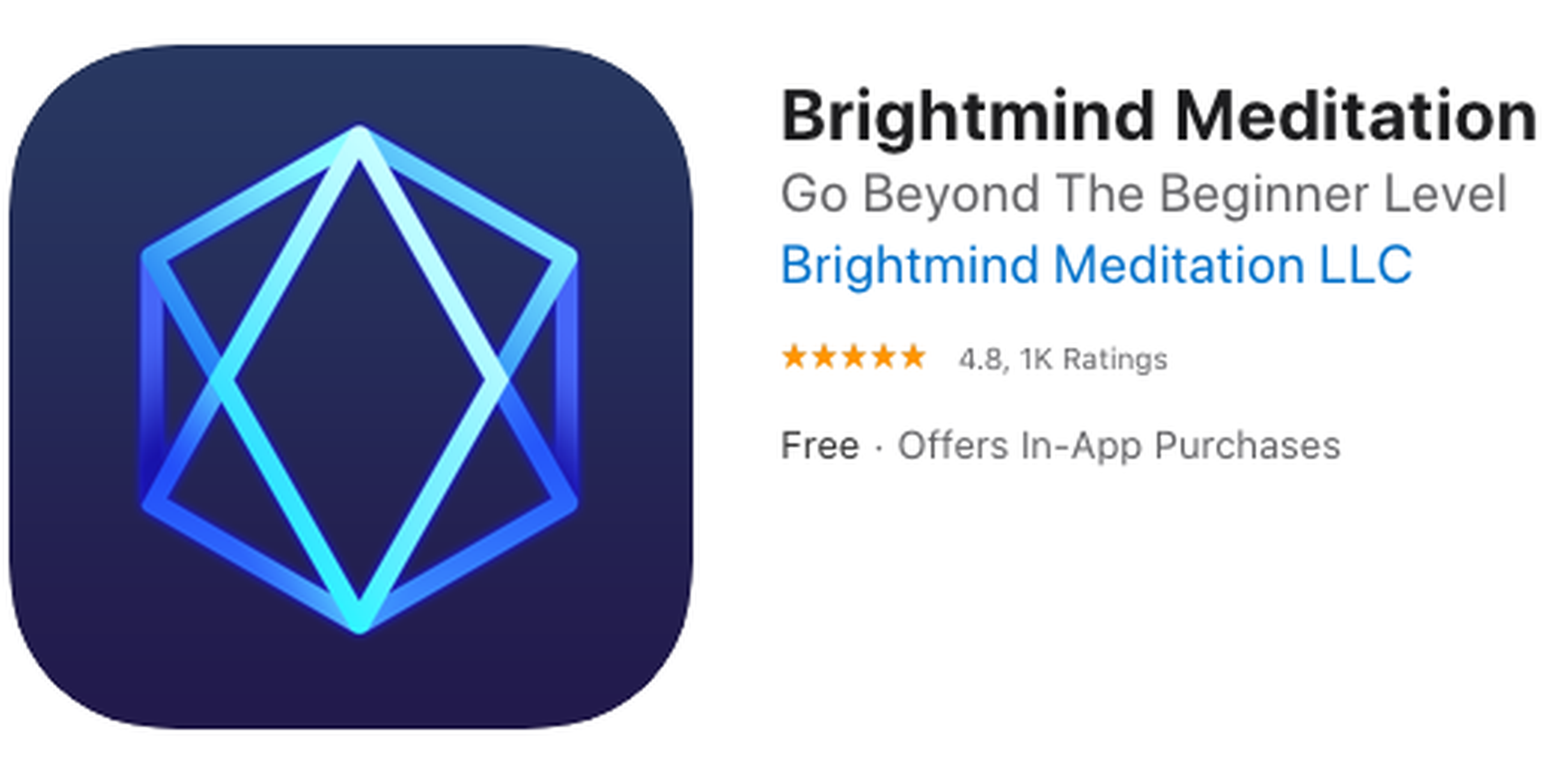
Brightmind features mindfulness teacher Shinzen Young, and many of the apps’ instructors have studied with Young for decades. The app offers a “core” eight-part class based on your interest in mindfulness, delivered by Shinzen or meditation expert Julianna Raye. Other meditations include instruction on how to increase your baseline level of concentration, how to create a mental state conducive to falling asleep, and how to recharge during a work break. Brightmind might be ideal for someone interested in a streamlined app that focuses on mindfulness specifically and relies on teachers with years of experience.
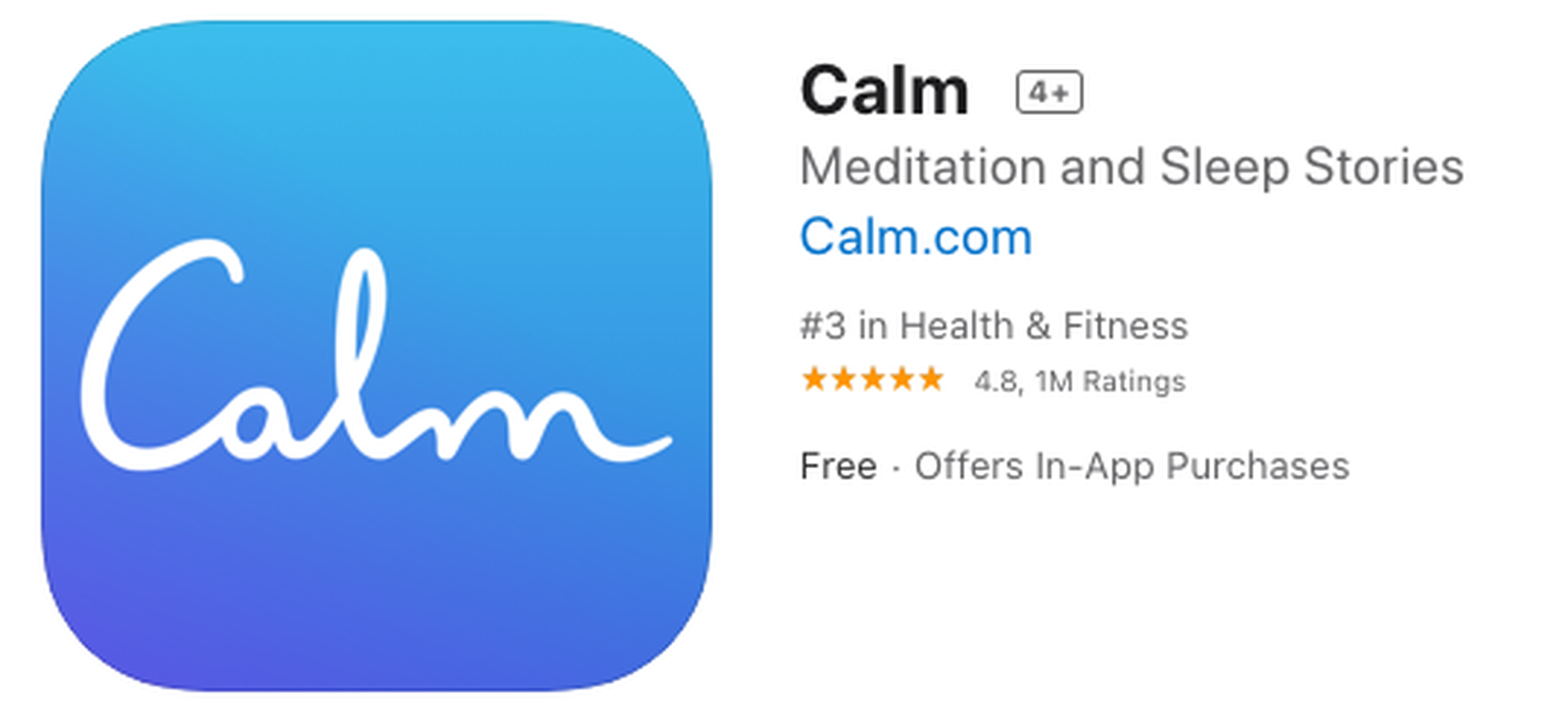
Calm’s mindfulness content is produced, and often voiced, by Tamara Levitt, a student of mindfulness meditation, Vipassana/Insight, Shambhala, Zen, and Theravada, and Mahayana Buddhist teachings. Mindfulness offerings include meditations and series for activities like walking and working, in addition to “masterclasses” on gratitude, conscious parenting, and mindful eating. Its visual design favors landscapes and warm blues, purples, and yellows. Famous contributors include LeBron James and Ellie Goulding. If you want to explore mindfulness in a setting that feels more like a spa than a yoga studio, consider Calm.
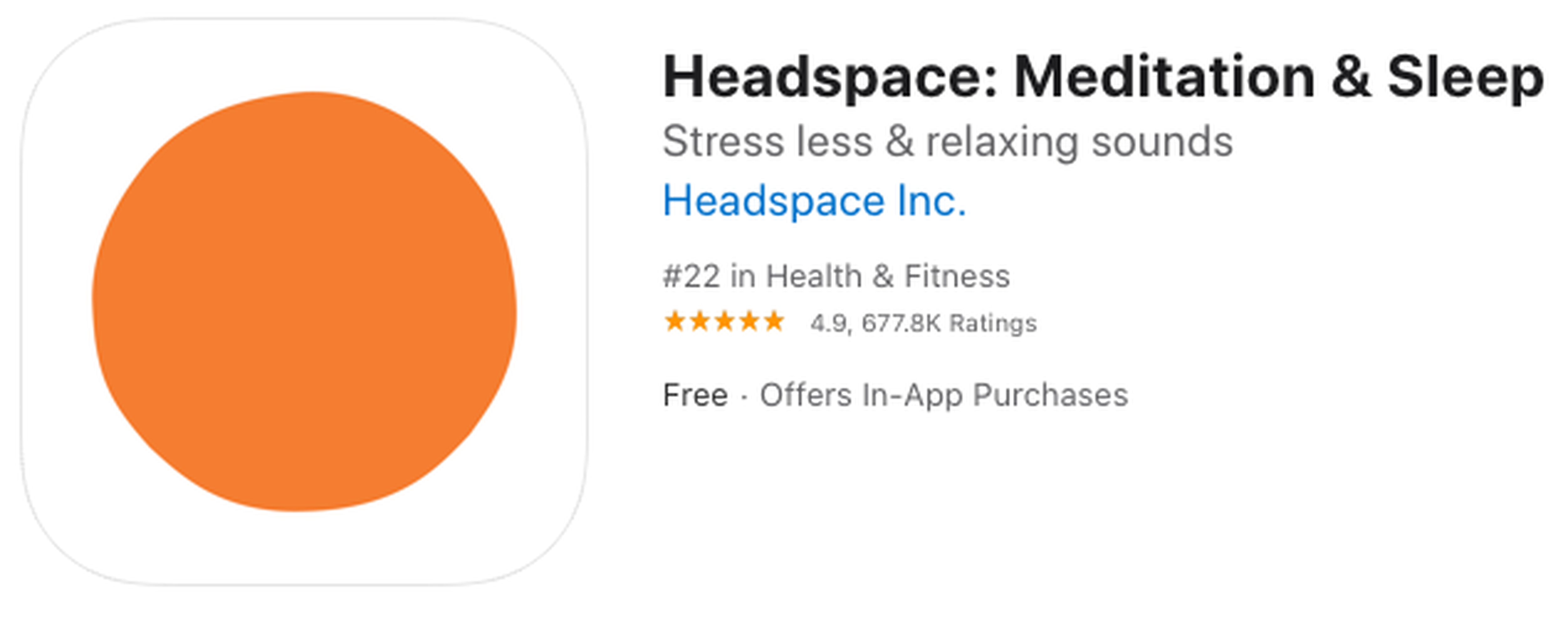
Former Buddhist monk Andy Puddicombe is the voice of Headspace. The app includes a 10-day “basics” course on the fundamentals of mindfulness, but there are also single meditations that encourage mindfulness around technology, eating, cleaning, walking, cooking, commuting, and exercising. Brief, quirky animated videos help explain tenets of mindfulness for beginners. Headspace may be a good fit if you’re interested in mindfulness to develop better focus, productivity, and problem-solving skills.
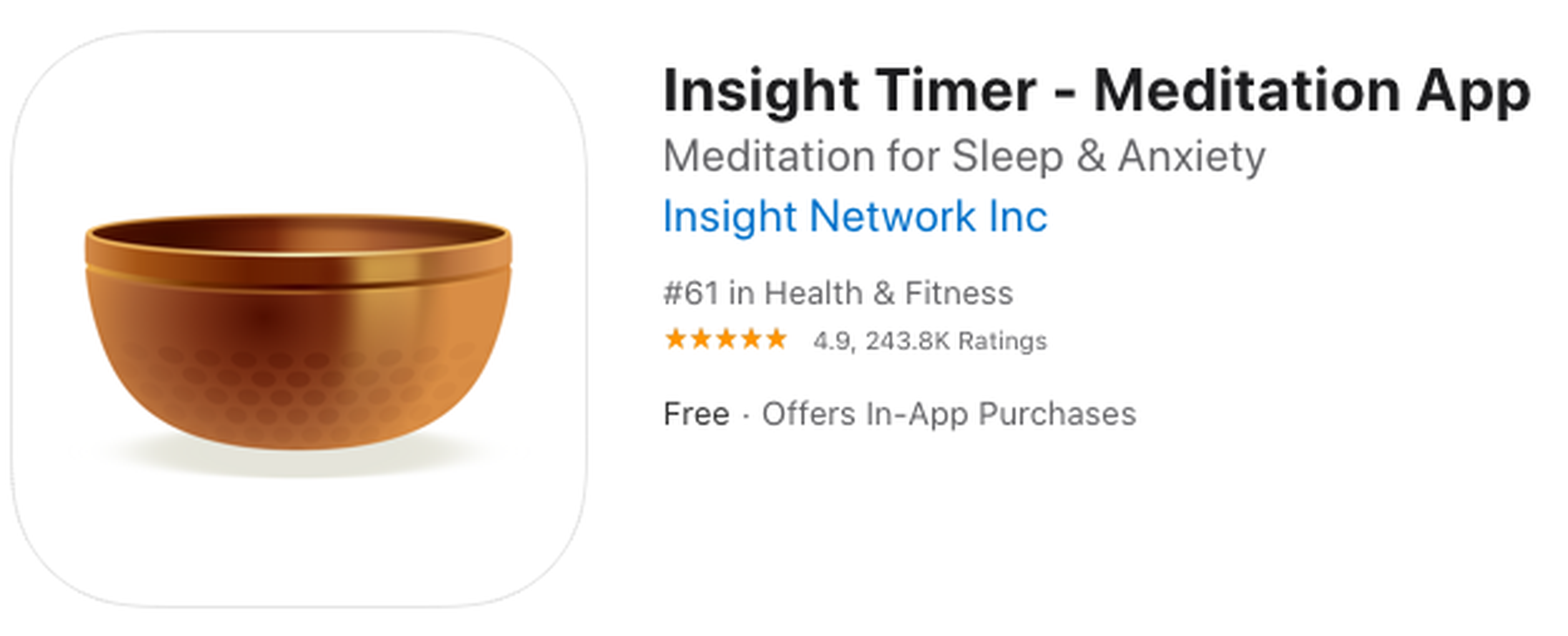
Insight Timer is known for its vast free library of meditations. Its mindfulness content, which is both free and subscription-based, features single meditations, courses, and talks. Teachers include mindfulness experts like Jack Kornfield and Tara Brach, who offer a 40-day course on mindfulness in daily life. Other topics include an introduction to mindfulness, managing depression with mindfulness, and a guide to mindfulness for teens. The app also has discussion groups along with live guided meditation sessions and yoga events.
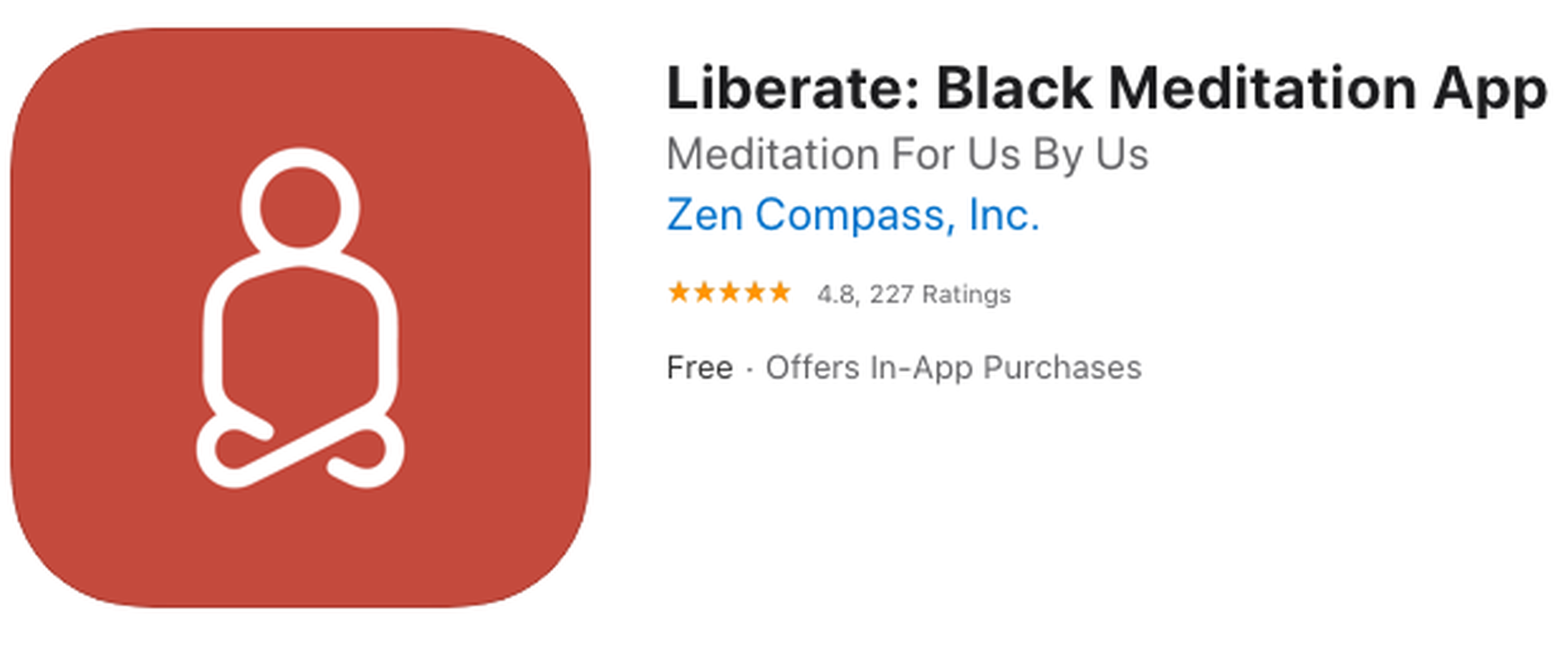
Liberate was developed specifically for people who identify as Black, Indigenous, or a person of color. Meditations are led by diverse teachers who address issues like Black Lives Matter, gratitude during coronavirus, and connecting with the power of one’s ancestors. Mindfulness meditations focus on topics like noting posture and breath, dealing with thoughts and emotions, and “spacious loving-awareness.” While the app is minimalist, it may be the perfect match for a Black or Indigenous person or person of color who yearns to feel welcomed and understood, and could also be useful for a white user who wants to broaden their exposure to mindfulness content.
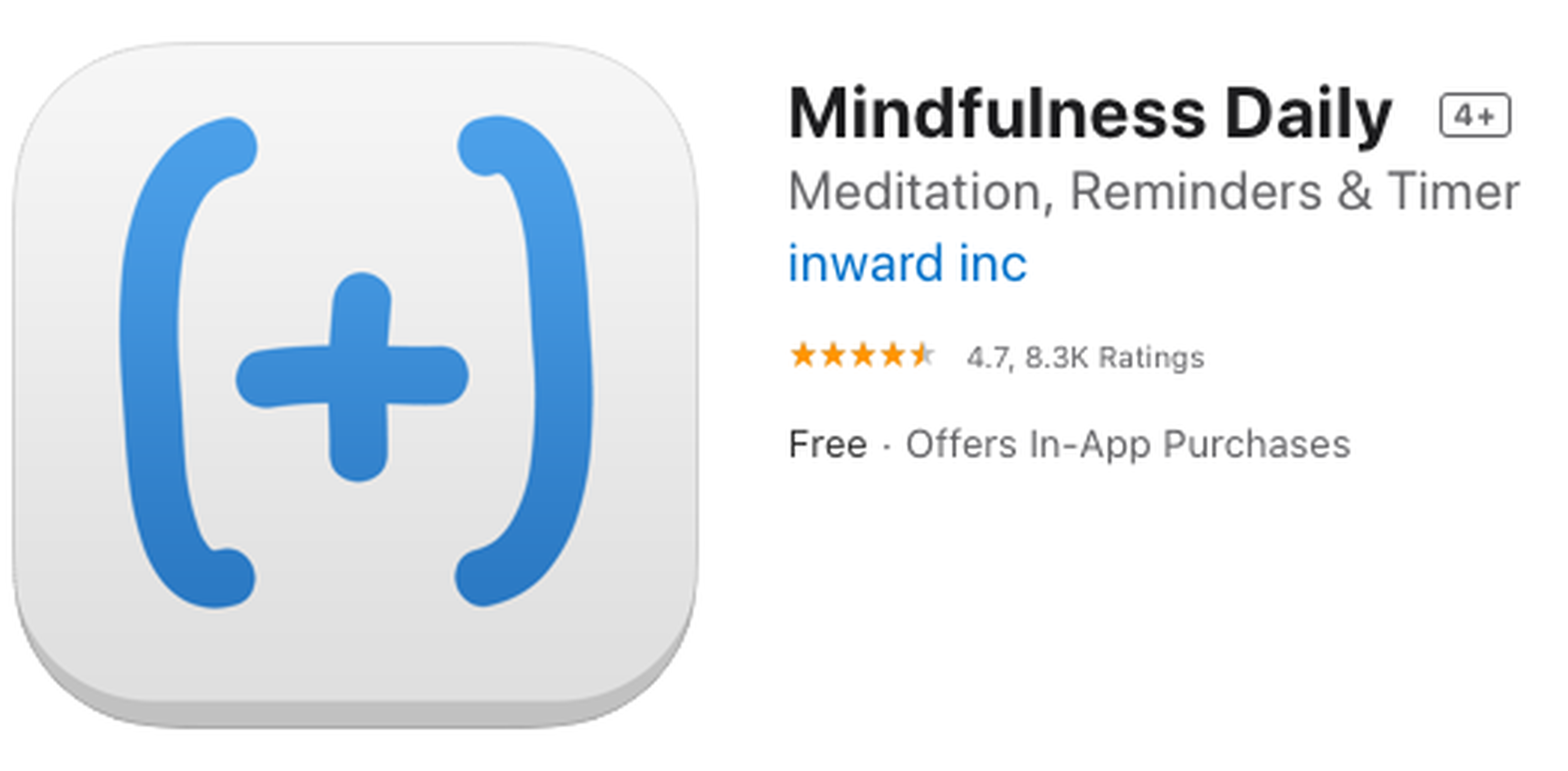
Mindfulness Daily offers a daily lesson in the form of a guided meditation that introduces users to basic concepts like mindful breathing, body scans, and noting emotions. The “simple start” program, which includes these daily lessons, can be completed in 21 days. Other tools include a basic notepad to compose a “mindful” message, a timer for pausing throughout the day, and a slider to gauge how you’re doing in the present moment. The app’s offerings are limited beyond its basic program and could be best for a user who wants to explore mindfulness but isn’t yet ready to commit to an annual subscription.
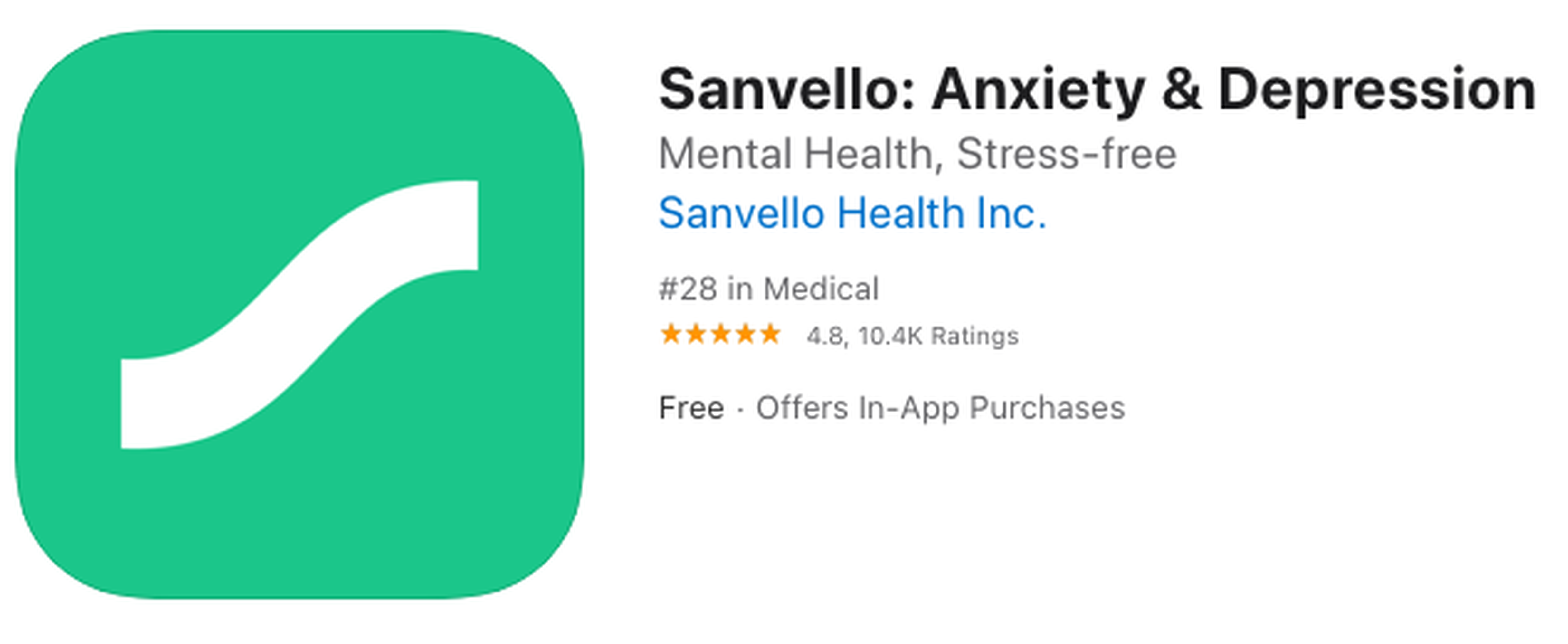
Sanvello is an elaborate app that offers mindfulness education as part of its focus on mental health and well-being. Its mindfulness content is limited to a foundational course and brief meditations that promote gaining “awareness” by observing your senses and surroundings, taking a walk, and checking in with your body. Only a few of these are available with the free version of the app. The rest must be accessed through a paid subscription. Sanvello could be useful for someone who wants a suite of wellness tools that includes mindfulness.
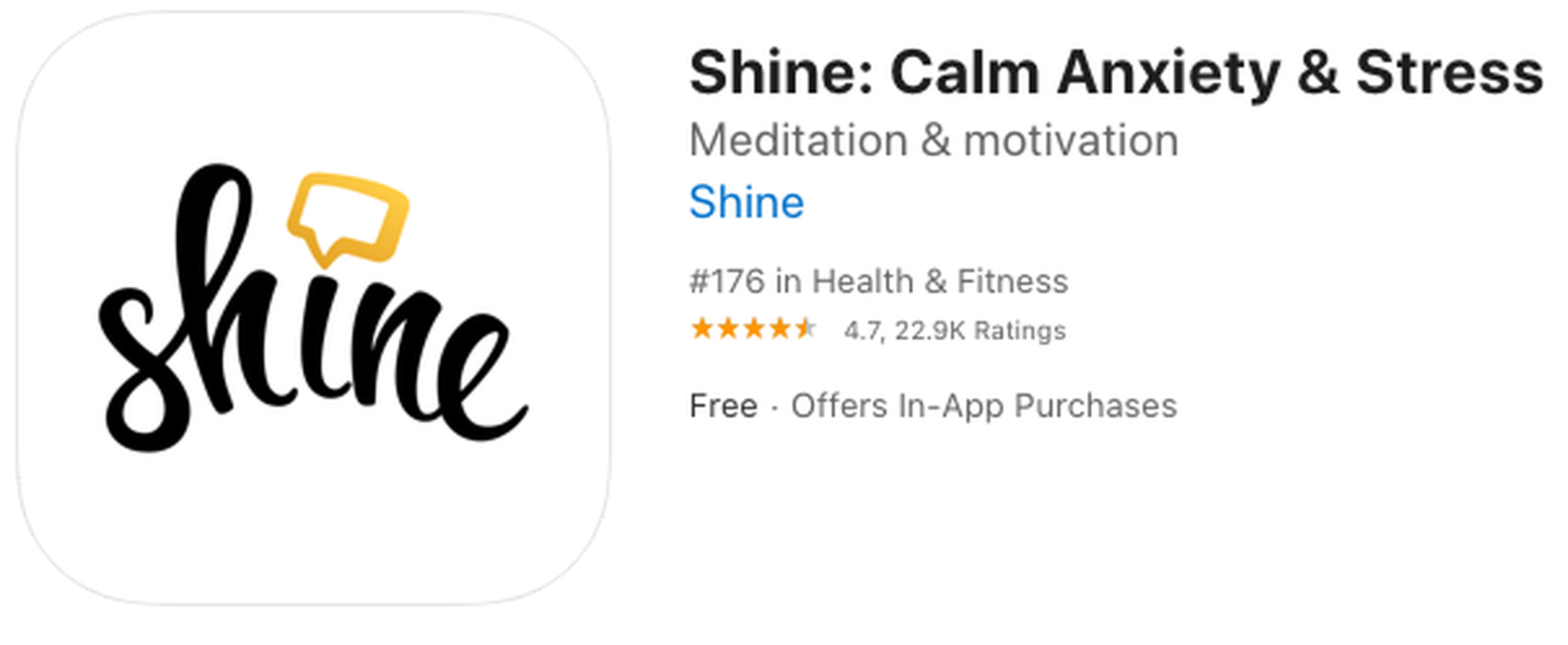
Shine was designed with accessibility and inclusivity in mind. It has a collection of meditations on Black mental health that focus on subjects like “representation burnout” and connecting with your ancestors. Many of its meditations include principles of mindfulness, but there is no course that a user can take to learn more. Instead, you can choose from single meditations on how to be more mindful and engaging in activities like mindful drawing, walking, and cooking. Shine is a great option for someone seeking an inclusive community and approach to meditation.
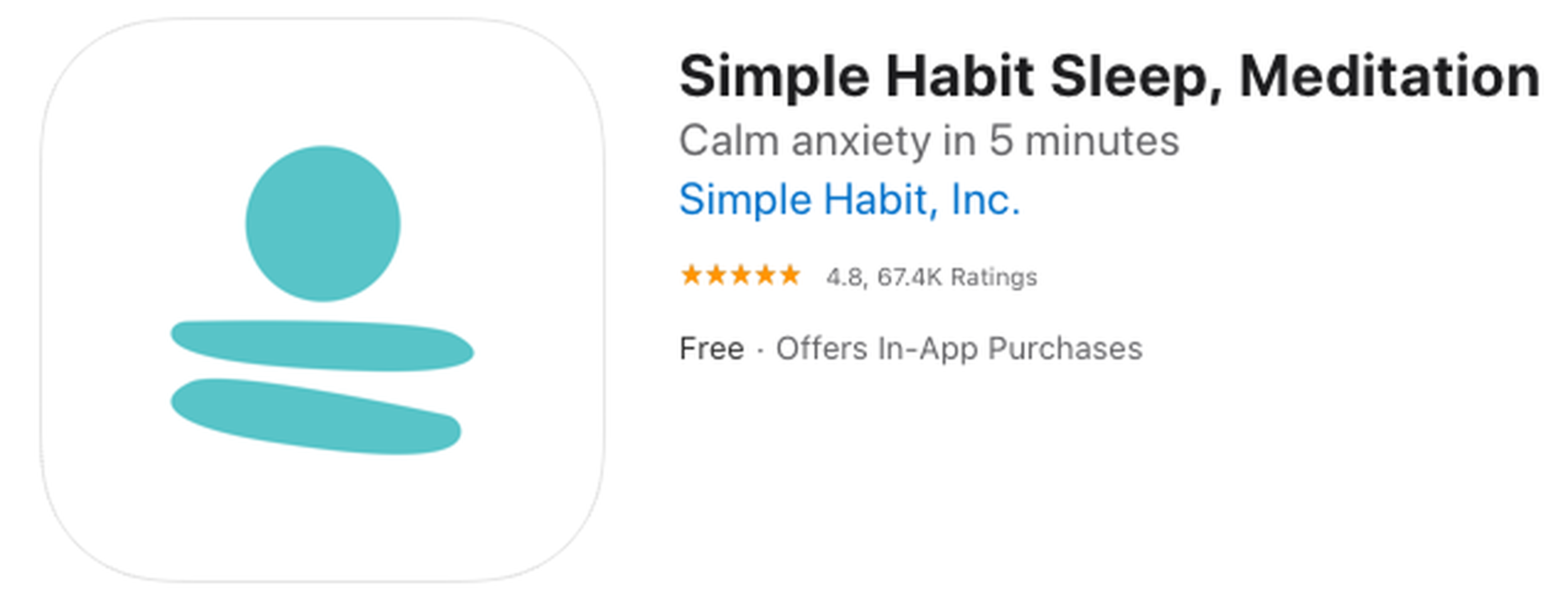
Simple Habit is another app that focuses on wellness with meditation as part of that approach. The app starts you with a pack of free meditations based on your interests and needs. An introductory, free series to mindfulness meditation covers the basic techniques of focusing on one’s breath, body, and senses. That series is hosted by Cory Muscara, a mindfulness teacher, former monk, and adviser to The Dr. Oz show. Other content includes series on the foundations of mindfulness, mindful parenting, mindfulness for athletes, and everyday mindfulness. Users looking for thorough mindfulness instruction, alongside a broader library of meditations and wellness offerings, will like Simple Habit.
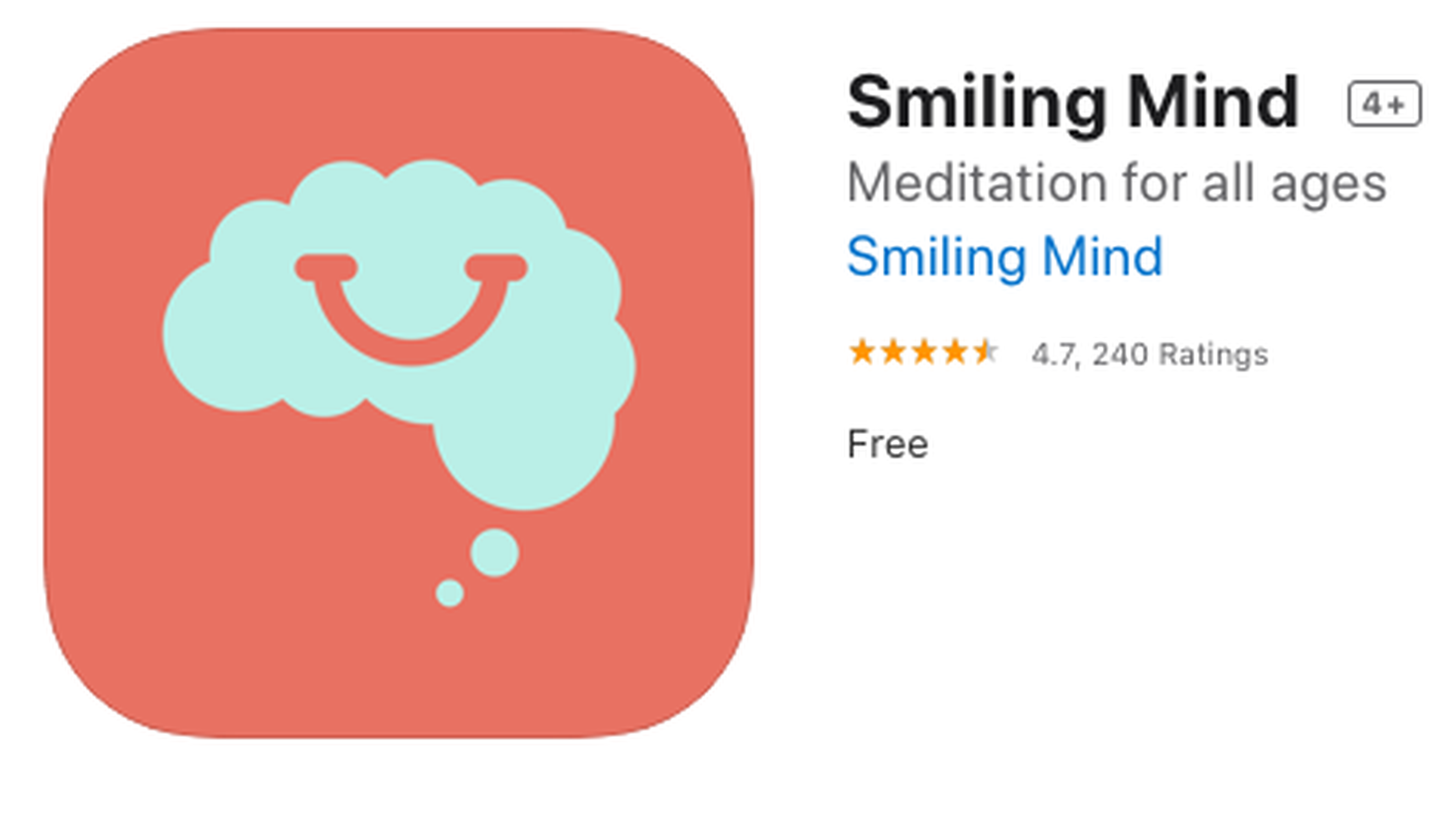
Smiling Mind is a nonprofit app created by two Australian co-founders. While it began with a focus on youth mindfulness, the app offers mindfulness education for adults, families, educators, and healthcare workers. Its foundations course for adults highlights five key elements of mindfulness practice: awareness, attention, engaging the senses, noting thoughts, and managing emotions. Other meditations include mindfulness for commuting, technology use, and sleep. Smiling Mind is both free and specific to mindfulness skill-building, which makes it perfect for someone looking to get a lot of information without the steep price tag of other subscription-based apps.
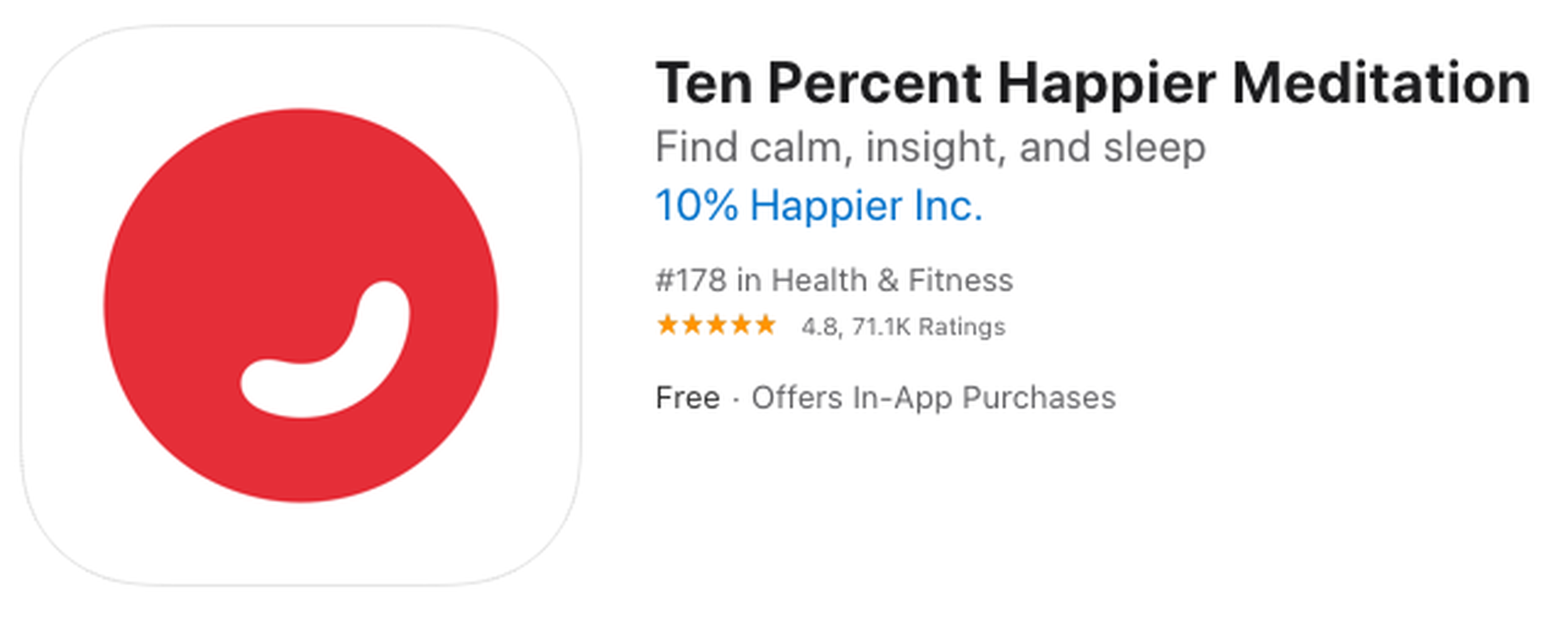
Co-founded by author and Good Morning America weekend co-host Dan Harris, Ten Percent Happier offers meditations from renowned instructors like Sharon Salzberg, Diana Winston, and Sebene Selassie. Its comprehensive library of meditations includes a collection on racism and identity. A series of talks cover basics like how meditation and mindfulness are different and how to parent mindfully. While there’s no single course on mindfulness, several individual meditations focus on how to rest, cook, walk, listen, and use technology mindfully. Ten Percent Happier is a great option for users who want an app that feels inclusive and responsive to current events while offering mindfulness instruction alongside a broad collection of meditations.
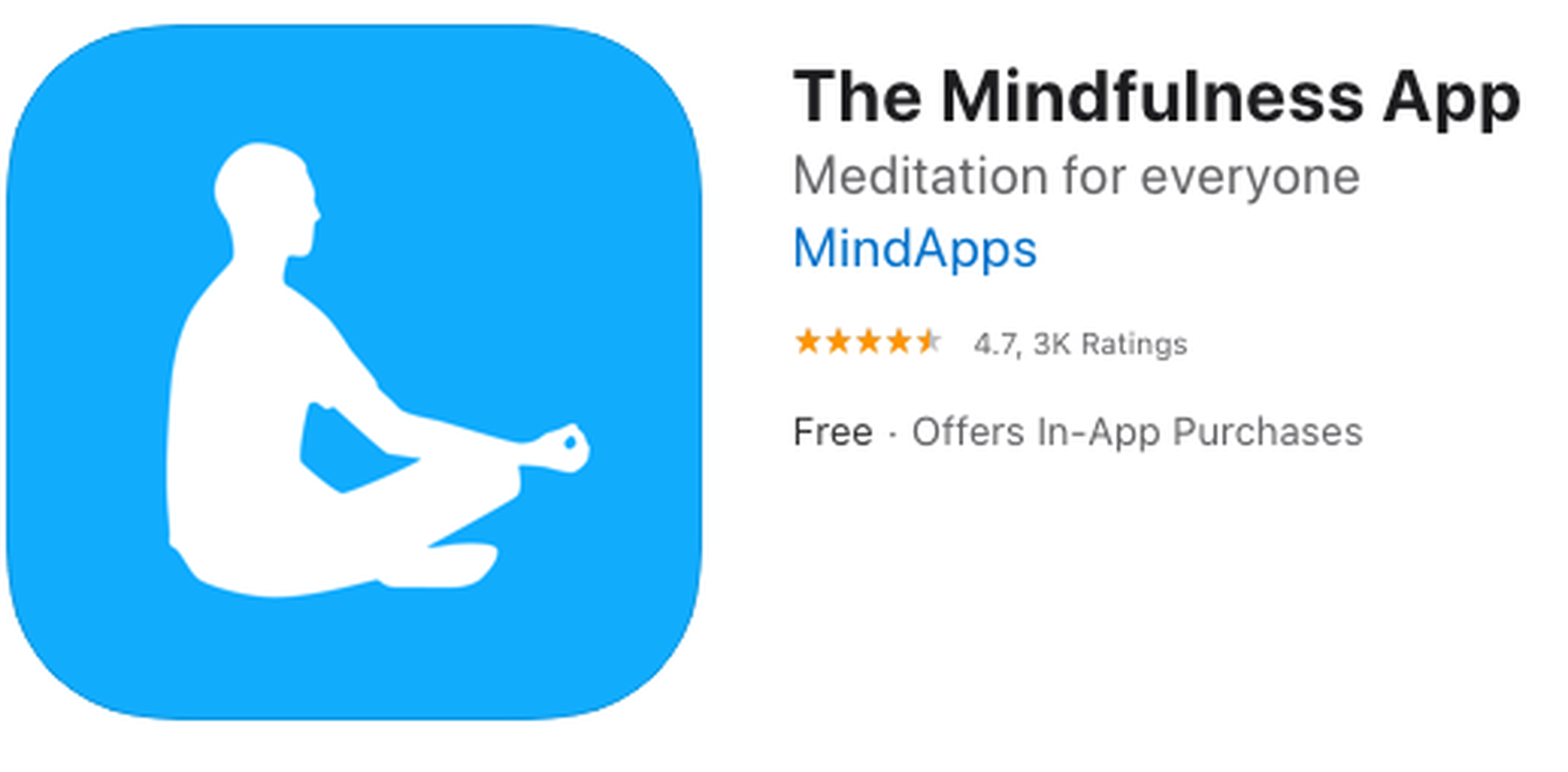
The Mindfulness App is led by mindfulness instructor Catherine Polan Orzech, who has two decades of experience in the field. Other instructors include Sharon Salzberg, Jack Kornfield, and Tara Brach. A free seven-day course teaches the fundamentals of mindfulness through guided meditation. The app offers programs of varying lengths and subject matter. One covers techniques to focus the mind’s attention on the breath and body. Another helps guide you through recognizing and dealing with thoughts and emotions as they come up. The Mindfulness App is a strong contender for users who want to focus on mindfulness and learn from high-quality instructors.
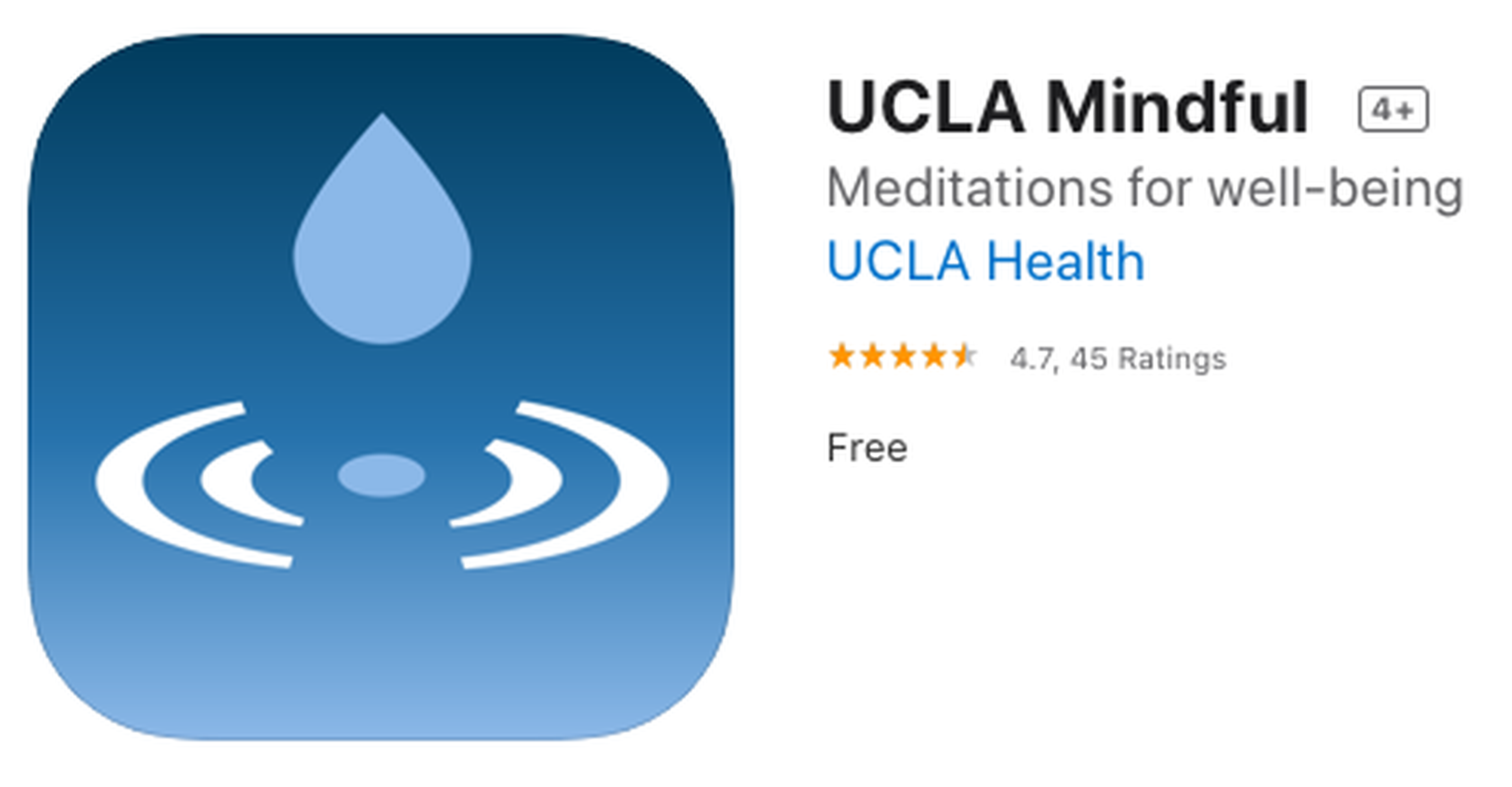
The UCLA Mindful App offers a basic education in mindfulness. A series of short videos hosted by Diana Winston and Susan Smalley, founder of the Meditation Awareness Research Center, explain what mindfulness is, how to choose a meditation, and the scientific research behind it. There are eight guided meditations for learning basic skills and a separate set of meditations for health and wellness, specifically designed for hospital patients or people experiencing health-related struggles. This simple, educational app is great for someone looking to learn about mindfulness before diving into a dedicated practice.
